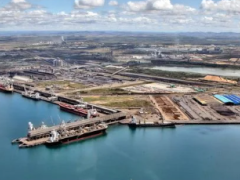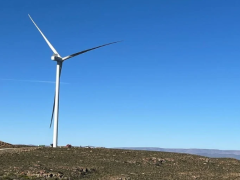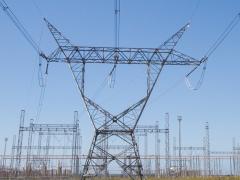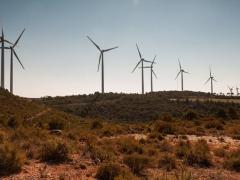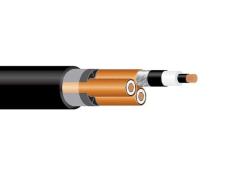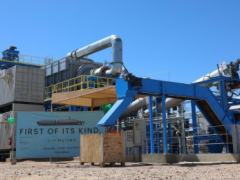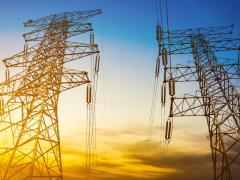by Vally Padayachee, NRS Association of South Africa
Against the backdrop of South Africa’s worsening electricity crisis, with its ever-increasing levels of load shedding, the NRS Association of SA issues this press release to assure the public that proactive and detailed planning is being thought through and drawn up to mitigate the risks associated with even higher stages of load shedding and the possibility of a total collapse of the electricity network. This planning is being undertaken with a sense of urgency by experts in both the public and private sectors.
The NRS 048-9 Code of Practice is primarily an electricity utility-driven and executed document that derives its mandate and authority, once duly approved by Nersa, as part of the Electricity Regulations Act (as amended) (the ERA). This Code of Practice is not driven by a single stakeholder, be it Eskom, a municipality, industry association, or any other body.
Further, while this Code of Practice provides for an ordered and consistent approach to emergency load reduction, it does not subrogate any actions that the System Operator (SO) may deem necessary in real-time to ensure the security of the national power system, in compliance to the Grid Code, which is to prevent a national blackout.
This means that the System Operator must prudently manage its system operating reserves. In the context of an actual emergency, compliance with real-time load reduction requirements will be given effect to by the ‘upstream’ control centre (i.e., the System Operator or control centre will instruct the level of load reduction required and take the necessary actions should this not be adequate).
Load shedding vs. a blackout
Although load shedding is the single biggest constraint on South Africa’s economic growth, it is a necessary tool to prevent the collapse of the Interconnected Power System (IPS) when demand exceeds supply. Load shedding differs from a “blackout” in that load shedding is a controlled intervention affecting a limited number of customers at a time, while a blackout would occur without warning in an uncontrolled manner and would affect many (if not all) customers simultaneously for an unpredictable period.
The media sometimes refers to load shedding as “rolling blackouts”. This is unfortunate and misleading since the term load shedding is an internationally accepted engineering term and understood to be for controlled load reduction by interrupting supply to customers on a rotational basis.
Restoration of supply to all customers after a blackout could take days or weeks. While the order in which supply would be restored to individual customers is often dictated by the nature of the incident, the ability to restore supply to essential loads as quickly as possible would form part of the restoration regime. It would be necessary for customers to provide information of their essential load requirements to the SO.
Limitations of the existing Code of Practice
The current load shedding or load reduction practices, system restoration practices and critical load and essential load requirements under power system emergencies are regulated by NRS 048-9, Edition 2 (2019), Code of Practice. The current Code regulates load shedding up to Stage 8.
The NRS 048-09 Code of Practice strives to balance three fundamental objectives:
- An equitable distribution of the burdens caused by an electricity shortage
- The imperative of avoiding the catastrophic consequences of a blackout
- The impact of load shedding on “essential loads” and “critical loads”
NRS 048-09 is a necessary revision of the Code because, since 2019, the performance of Eskom Generation’s fleet coal-fired power stations has deteriorated to a level which may now necessitate National Central Control (NCC) and/or the SO to institute higher levels of load shedding beyond Stage 8. The NRS Association, through its NRS 048-9 Work Group, is currently at an advanced stage in revising the current Edition 2 of the NRS048-9 Code of Practice.
This proposed revision will include planning and associated risk mitigation measures to implement load shedding beyond Stage 8, and could incorporate the whole base load, if when necessary. This is in addition to all the practices, measures, processes and systems that the NCC and the SO already has in place to address such load shedding related events.
Furthermore, the NRS 048-09, Edition 3, Code of Practice is also being developed and revised after extensive consultations and deliberations by and with those fully cognisant of the technical and practical constraints of the distribution network.
In due course, Nersa will initiate a consultative process with the public once the proposed NRS 048-9 Edition 3 version has been approved by the Association’s management committee. It will then be subjected to Nersa’s internal processes before being finally approved for implementation.
Details of the proposed revision to the Code of Practice
Part 9 of NRS 048 Code of Practice was developed to address the need for a national code of practice for real-time emergency load reduction and restoration of supply after a major system incident.
The NRS 048-9 Code of Practice addresses not only the power system requirement (the electricity load reduction required) but how this is done and communicated to have the least negative impact on critical infrastructure.
The need for such a Code of Practice arose after national load shedding became a frequent occurrence in South Africa in 2008. Requirements for extreme power system constraints and “blackout” restoration have also been included in the form of essential electricity load requirements.
The proposed third edition of the Code of Practice replaces the first two editions published in 2010 and 2019 respectively. Several changes and enhancements are being considered for inclusion in this proposed third edition, based on:
- Experience in implementing the requirements of the first two editions
- Execution of emergency load reduction since November 2013 (when it was required for the first time since 2008)
- Feedback from electricity distributor licensees and some key customers
- Eskom’s National Central Control (NCC) has the responsibility and the authority to intervene in the network in any way necessary including actively disconnecting sections of the national grid. The NRS048-9 Code of Practice in no way subrogates this authority.
The proposed NRS048-9, Edition 3 Code of Practice provides the following:
- A structured way for utilities responding to NCC’s instruction to reduce load, allowing them to control how the load is reduced
- Limits and suggestions on ways of managing critical and essential electricity loads
- Communication and notification obligations to the public
Here are some of the proposed NRS048-9, Edition 3 legal principles or legal limitations:
- The NRS048-9 Code of Practice has no authority to designate special sectors.
- The NRS048-9 Edition 2 has been made an electricity distributor licensee requirement by NERSA, partly because it complies with existing legal principles. The final NRS 048-9 Edition 3 must and needs to comply with these legal principles, for it to be considered by NERSA as qualifying to be an electricity distributor licence requirement as per NRS 048-9 Edition 2.
- Compliance to the Electricity Regulation Act 4 of 2006 (as amended) (ERA) “equity” clauses
- Electricity Regulation Act 4 of 2006 (as amended) (“ERA”) - Powers and duties of electricity distributor licensee:
- An electricity distributor licensee may not discriminate between customers or classes of customers regarding access, tariffs, prices, and conditions of service, except for objectively justifiable and identifiable differences approved by NERSA.
- A transmission or distribution licensee must, to the extent provided for in the licence, provide non-discriminatory access to the transmission and distribution power systems to third parties.
- e) Additionally, the ERA makes provision for special conditions and decisions when a disaster has been declared.
Proposed changes and enhancements being considered by the NRS 048-9 Work Group for possible inclusion in this third edition
- The proposed increase in load shedding stages from the current eight stages, incorporating the whole base load.
In NRS048-9 Edition 1, with stages capped at Stage 4, requiring utilities to “find” electricity load under emergency conditions, with 75% of the load not being used was reasonably easy. However, attempting to do so beyond Stage 4 is not easy.
The need for Stage 6 load shedding prompted the SO to request the NRS 048-9 Work Group to consider extending the load shedding stages to manage load shedding above Stage eight 8.
In Stage 8 half the electricity load is shed, and the other half is waiting to be shed. It’s generally much harder to “find” electricity load under emergency conditions.
The final NRS 048-9 Edition 3, Code of Practice will provide a methodology for utilities to reduce the whole load base in a structured way. Once all the load is used there is therefore no need for a contingency option.
Other changes and enhancements under consideration:
- Removal of non-16 block or non-2-hour options
- Removal of contingency sections
- Explicit instructions for utilities to keep lists of their exempted loads
- Allowing municipalities to use the gap between 5% and 6,25% for critical electricity loads that benefit all customers, while allowing Nersa to audit and possibly undo this if inequity is discovered
- More specific instructions on how load shedding is done to help the System Operator protect the system and frequency
- Specifying that single blocks must be shed and returned in turn
- Allowing the SO to dictate changes to odd or even hour shedding to balance the load
- Allowing the National Control Centre to intervene in the real-time shedding of utilities to improve frequency control
The public is assured that the need to plan for load shedding beyond Stage 8, and the removal of the associated contingency measures, is primarily a proactive measure to enable the various electricity utilities, especially Eskom, to be in a state of readiness and preparedness to respond in the event of and the need to (but hopefully not) institute load shedding beyond Stage 8 levels.
Although the Association believes that NCC and SO have managed load shedding well, often under difficult circumstances, to keep as many of the lights on as possible, it feels that the proactive planning and preparation for load shedding at elevated Stages will prevent errors from occurring.
The way ahead
Once the Association’s management committee has approved the NRS 048-9, Edition 3, the Code of Practice document will be forwarded to Nersa for approval once it has satisfied all Nersa’s internal processes and public consultation.
Compliance with the requirements of NRS 048-09 Edition 2 was mandated by Nersa and included as a condition of an electricity distributor license. It is anticipated that the regulator will also mandate Edition 3 as an electricity distributor license condition in terms of the Electricity Regulation Act of 2006 (as amended).
Alternatively, this Code of Practice may be included as a requirement under the Grid Code. General compliance by electricity distributor licensees to the Code of Practice will be overseen by Nersa in terms of its licensing processes. The regulator may from time-to-time mandate alternative protocols or clarifications on the provisions related to the application of this Code of Practice.
About the NRS Association of South Africa
The National Rationalised Specifications (NRS) Association of South Africa is a high-impact voluntary forum of like-minded organisations that was formed to collaborate and develop voluntary industry specifications with the primary intention of standardising equipment specifications across the South African Electricity Supply Industry (ESI).
The objectives of the NRS Association of SA and its associated structures are to support the ESI in developing and maintaining rationalised, non-mandatory electro-technical guidelines and specifications for the industry under the NRS brand through which technology standardisation is promoted.
The NRS Association of SA can play a significant role through its various structures in developing and compiling the NRS 048-9 Code of Practice. The Association, in collaboration with the National Energy Regulator of South Africa (Nersa), has prioritised the development and approval of NRS 048-9, Edition 3, Code of Practice.
It is also accepted that documents developed by the NRS Association of SA through its various work groups and subsequently formally approved by its management committee may/can be adopted by the South African Bureau of Standards (SABS) and thereby become national standards or may be adopted by the National Energy Regulator of SA (Nersa). The adopting authority shall, upon transfer and adoption, become the owner of the revised document. Consequently, the NRS Association, its members, office-bearers, or appointed delegates are indemnified from any legal action or claim that may arise out of the use of the adopted or revised document.
The NRS Association of SA is an unincorporated voluntary non-profit association with perpetual succession and its membership includes the following stakeholders:
- The eight major metropolitan municipalities, namely:
- Buffalo City Metropolitan Municipality
- City Cape Town Metropolitan Municipality
- City of Ekurhuleni Metropolitan Municipality
- eThekwini Metropolitan Municipality
- City of Johannesburg Metropolitan Municipality / City Power JHB
- Manguang Metropolitan Municipality/CENTLEC
- City of Tshwane Metropolitan Municipality
- Nelson Mandela Bay Metropolitan Municipality
- The Association of Municipal Electricity Utilities of Southern Africa (AMEU)
- The South African Bureau of Standards (SABS)
- The National Energy Regulator of South Africa (Nersa)
- Eskom Holdings SOC Limited
For more information contact Vally Padayachee, Phone 083 297-2287, vally@vpassociates.co.za


